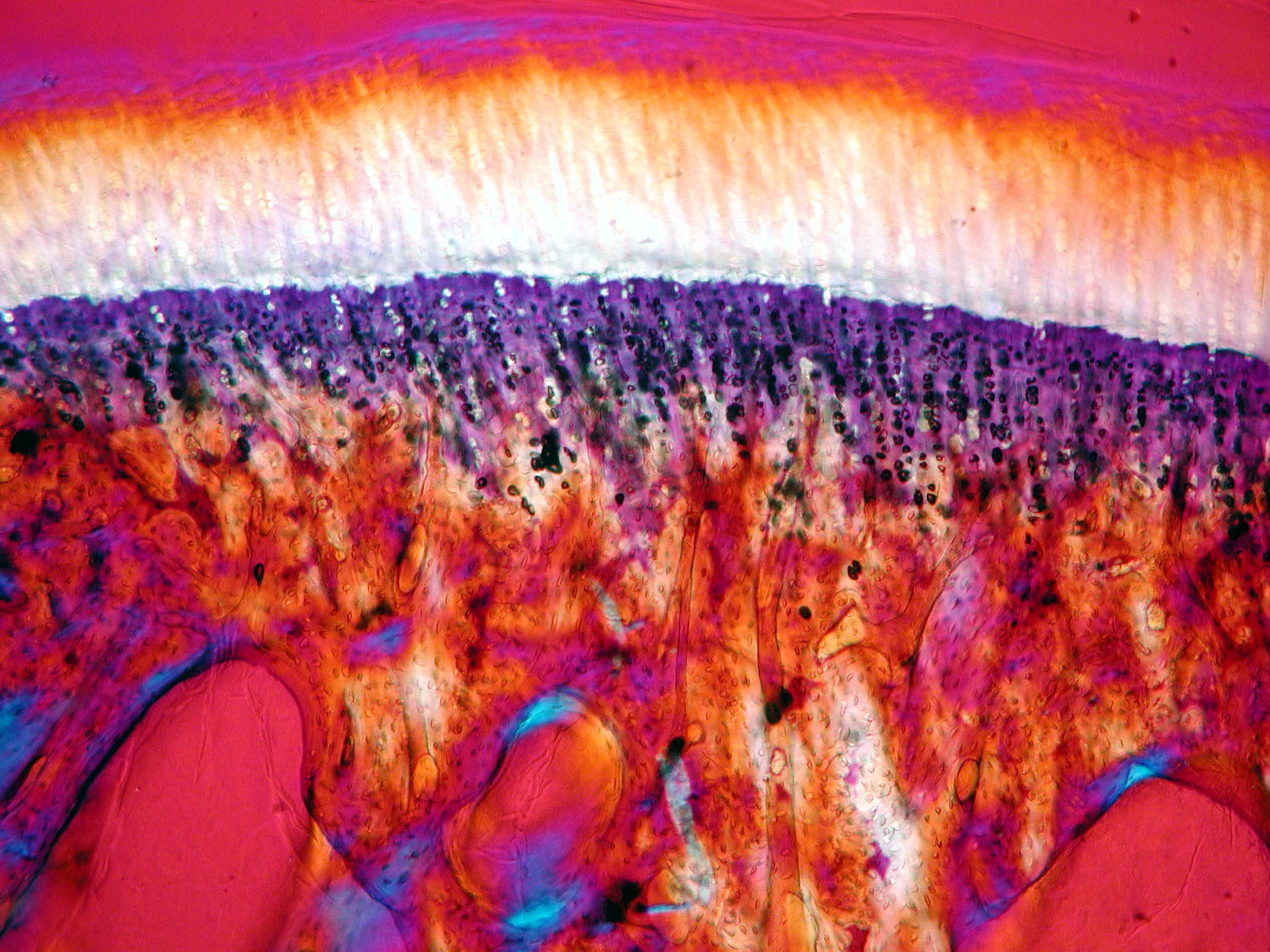Researcher Contact
Nadia Benkirane-Jessel
Directrice de recherche Inserm
Unité 1260 " Nanomedecine regenerative"
Mobile : 06 42 48 45 73

Cartilage articulaire © Inserm/Chappard, Daniel
Researchers from Inserm and Université de Strasbourg at Unit 1260 “Regenerative Nanomedicine” have developed an implant which, when applied like a wound dressing, regenerates cartilage in the event of major joint lesions and incipient osteoarthritis. The details of this innovation, which has been validated in the preclinical setting, have been published today in Nature communication.
Increases in life expectancy and the number of accidental traumas call for the development of new types of surgery to replace defective joints. Among the chronic diseases, osteoarthritis – described as destruction of the cartilage affecting the various joint structures, including the bone and synovial tissue that lines the inside of the joints – represents a genuine public health issue. Depending on the clinical diagnosis, various therapeutic options are possible – ranging from microtransplant to joint replacement. Nevertheless, these procedures are all invasive, potentially painful, limited in efficacy and not without side effects. In reality, apart from joint replacement, current treatment strategies are limited to temporary cartilage repair and pain relief. Treatments mainly involve the injection of anti-inflammatories as well as hyaluronic acid to improve joint viscosity. Stem cells can also be used, particularly because they secrete molecules able to control the inflammation.
Within this area and with the aim of regenerating this supple and often elastic connective tissue that covers our joints and enables the bones to move and slide in relation to each other, a team of researchers from Inserm and Université de Strasbourg has recently developed a dressing for cartilage – inspired by the new-generation wound dressings that act as a second skin. With the dressings developed by Ms. Benkirane-Jessel and her team, the therapeutic response reaches a new milestone. We are no longer talking about repair but the actual regeneration of the joint tissue.
These dressings comprise two layers. The first – which acts as a support (reminiscent of everyday wound dressings) – is a membrane comprised of polymer nanofibers and supplied with small vesicles containing growth factors in quantities similar to those secreted by our own cells. The second is a layer of hydrogel loaded with hyaluronic acid and stem cells from the patient’s own bone marrow. It is these cells that – by differentiating into chondrocytes (cells that form the cartilage) – will regenerate the joint cartilage.
Nadia Benkirane-Jessel
Directrice de recherche Inserm
Unité 1260 " Nanomedecine regenerative"
Mobile : 06 42 48 45 73
Preclinical safety study of a combined therapeutic bone wound dressing for osteoarticular regeneration
Laetitia Keller1,2,§, Luc Pijnenburg1,2,§, Ysia Idoux-Gillet1,2,§, Fabien Bornert1,2, Laila Benameur3, Maryam Tabrizian3,4, Pierrick Auvray5, Philippe Rosset6, Rosa María Gonzalo-Daganzo7, Enrique Gómez Barrena8, Luca Gentile1,2,9,10, Nadia Benkirane-Jessel1,2,*
Affiliations
1INSERM (French National Institute of Health and Medical Research), UMR 1260, Regenerative Nanomedicine (RNM), FMTS, 11 Rue Humann, 67000 Strasbourg, France.
2Université de Strasbourg, Faculté de chirurgie dentaire, Hôpitaux Universitaires de Strasbourg, 8 Rue de Ste Elisabeth, Strasbourg, France.
3Department of Biomedical Engineering, McGill University, 3775 Rue University, H3A24, Montréal, Canada.
4Faculty of Dentistry, McGill University, 2001 Avenue McGill, H3A1G1, Montréal,, Canada.
5C.Ris Pharma, Parc Technopolitain - Atalante Saint-Malo, 35400 Saint Malo, France.
6CHRU de Tours, Service de Chirurgie Orthopédique 2, Faculté de Médecine de Tours, Université François Rabeleis, Tours, 37044, cedex 9, France.
7Unidad de Producción Celular, Sº de Hematología y Hemoterapia, Hospital Universitario Puerta de Hierro Majadahonda, 28222 Majadahonda, Madrid, Spain.
8Orthopaedic Surgery and Traumatology Department, Hospital La Paz-IdiPAZ and Universidad Autónoma de Madrid, Madrid E-28046, Spain.
9Hasselt University, Campus Diepenbeek, Agoralaan, Gebouw D, 3590, Diepenbeek, Belgium.
10University of Applied Sciences, Kaiserslauter, Campus Zweibrücken, Amerikastr. 1, 66482, Zweibrücken, Germany.
Nature Communications : https://doi.org/10.1038/s41467-019-10165-5